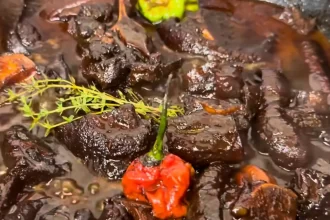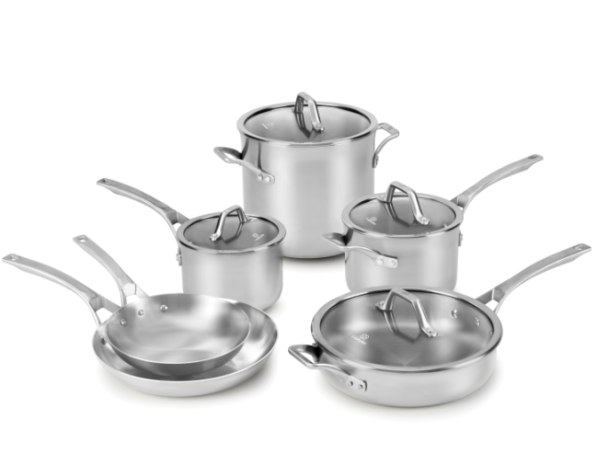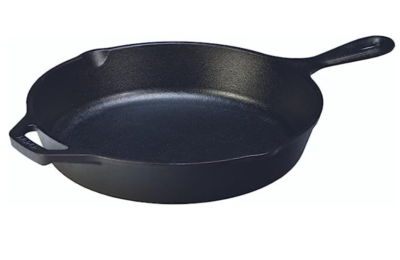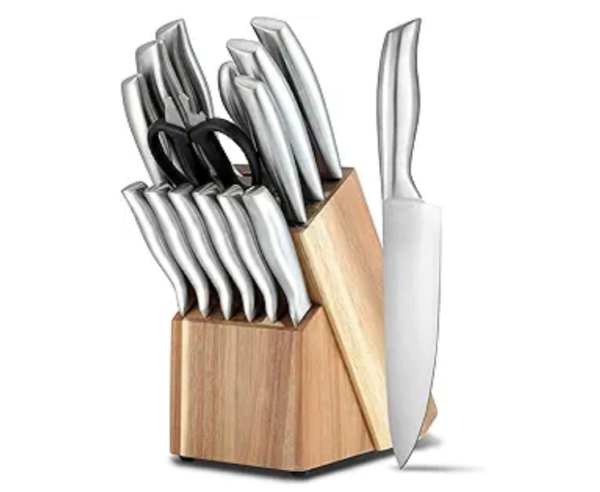A wok is a versatile cooking vessel originating from East Asia, particularly China. It features a rounded bottom and sloping sides, designed to evenly distribute heat and facilitate various cooking techniques such as stir-frying, deep-frying, steaming, and braising. Woks come in different materials, including carbon steel, stainless steel, cast iron, and non-stick coatings, each offering unique benefits. They are commonly used in Asian cuisine but have gained popularity worldwide due to their efficiency and ability to cook quickly at high temperatures.
Consider Adding a Wok to Your Kitchen Arsenal
While some recipes suggest that a 12-inch nonstick pan can yield decent stir-fry results, opting for a wok offers distinct advantages, especially for preparing larger quantities of food like noodles or rice. Unlike skillets, woks provide ample space to prevent spills during cooking, even without meticulous stirring or multiple batches. Moreover, woks excel in achieving the desired browning and flavor that may be harder to attain with nonstick skillets. In essence, while nonstick skillets remain suitable for certain dishes like eggs and fish, we highly recommend incorporating a wok into your culinary toolkit for superior stir-frying experiences.
Summary of our recommendations for a Wok in this section:
Affiliate Disclaimer: Shop Little Guyana participates in various affiliate marketing programs, which means we may earn commissions on purchases made through our links to retailer sites. This helps us continue to provide valuable content and recommendations to our readers while supporting our business. Rest assured, our reviews and recommendations are always based on our honest opinions, and we only promote products and services that we genuinely believe will benefit our audience. Thank you for your support!
| Aspect | Yosukata 13.5in Carbon Steel Wok | Joyce Chen 14in Wok | Made In Cookware – 12″ Blue Carbon Steel Wok |
| Material | Carbon Steel | Carbon Steel | Blue Carbon Steel |
| Cooking Surface | Flat bottom | Flat bottom | Flat bottom |
| Handles | Wooden handle | Two wooden handles | Long stay-cool handle |
| Performance | Achieves golden, crunchy sear, spacious cooking surface | Heats up quickly, maintains heat well, holds seasoning | Precise heat distribution, develops non-stick surface over time |
| Price | $$ | $ | $$$ |
| Check The Price | Amazon | Amazon | Amazon |
Best Overall – Yosukata 13.5in Carbon Steel Wok
Based on reviews, the flat bottom of this pan provides a spacious cooking surface, making it easy to thoroughly season dishes. It’s praised for its ability to achieve a golden, crunchy sear – every piece of beef crisps perfectly with a tender interior. The cool wooden handle makes flipping stir fry, beef, or chicken effortless. Thanks to its shape, this pan is ideal for searing meats, cooking saucy dishes, or even deep frying.
Check the price on Amazon for: Yosukata 13.5in Carbon Steel Wok
Best Value – Joyce Chen 14in Wok
This expertly designed wok with two wooden handles, making it super easy to handle while cooking up a storm over high heat. Its flat bottom is a perfect fit for home kitchens, working seamlessly on various cooktops like induction stovetops and gas ranges. Crafted from sturdy carbon steel, it heats up quickly and maintains that sizzle throughout your cooking adventure. Plus, it’s budget-friendly compared to others in its league.
The ridged texture of this wok not only adds to its charm but also helps it hold seasoning like a pro, enhancing its performance with each use. With its slick surface, say goodbye to food sticking to the sides. Although, achieving a thick, crusty sear on your steak might require a little extra effort due to its nonstick quality.
Check the price on Amazon for: Joyce Chen 14in Wok
Best High-End – Made In Cookware – 12″ Blue Carbon Steel Wok
While a high-end wok can be a status symbol for some, it’s not necessarily a must-have for everyone. The real question is whether you need a high-end wok, and the answer depends on your cooking preferences, frequency of use, and budget. However, it’s essential to remember that you don’t necessarily need a high-end wok to whip up delicious meals. There are plenty of affordable options available that can still get the job done effectively. It all comes down to your personal preferences, cooking style, and budget.
If you’re serious about stir-frying or other wok-centric cooking techniques, a high-end wok with precise heat distribution can make a noticeable difference in your dishes. The Made In Wok, features a flat bottom and long stay-cool handle, perfect for stir-fry with both convenience and style. This ultimate hybrid combines the best of Carbon Steel and Stainless Steel, offering the heat retention of cast iron and the responsiveness of stainless steel. Versatile across electric, gas, and induction stoves, it improves with age, developing a non-stick surface through proper seasoning.
Check the price on Amazon for: Made In Cookware – 12″ Blue Carbon Steel Wok
Essential Wok Accessories
Having the right accessories for your wok can significantly improve your cooking experience and the quality of your dishes. Check out our Essential Wok Accessories for our recommendations.
Why Lighter Woks Are Preferred
Handling a large, hot wok filled with food can be challenging, especially if the wok itself is heavy. Even with helper handles, transferring food from the wok to a serving dish often requires assistance from the other hand. While leaving the wok on the stove and scooping out the food is an option, it increases the risk of overcooking, particularly with cast iron woks that retain heat. We suggest lighter woks which are more efficient and versatile when they could be lifted with just one hand.
Best Wok Materials: Carbon Steel and Lightweight Cast Iron
When it comes to woks, carbon steel and lightweight cast iron are the top choices among cooks. These materials excel at transferring heat efficiently, resulting in better searing of foods compared to woks made of stainless steel, clad materials, or those coated in nonstick materials. Similar to our experiences with cast-iron and carbon-steel skillets, these metals gradually develop seasoning with each use. Over time, the polymerized oil creates a naturally nonstick surface, potentially allowing us to forgo the use of nonstick-coated skillets while still enjoying their slick surfaces.
Why Season a New Carbon Steel Wok
Seasoning a new carbon steel wok is essential to prevent rust and create a nonstick surface. Unlike stainless steel, carbon steel is prone to rusting if exposed to air or moisture. By seasoning the wok, you create a protective layer that not only prevents rust but also improves its nonstick properties over time. Additionally, seasoning enhances the flavor of your dishes and helps develop a beautiful patina on the wok’s surface with repeated use. Overall, seasoning is crucial for maintaining the quality and longevity of your carbon steel wok.
To season a new wok and prevent rust while creating a nonstick surface, follow these steps:
- Scrub the new wok inside and out with steel wool and soap, then dry it thoroughly.
- Heat the wok over medium heat. Add 2 tablespoons of high-smoke-point oil, such as vegetable oil, along with one scallion cut into 2-inch lengths and 1/2 cup of sliced ginger. Stir-fry the mixture for 20 to 30 minutes, moving the vegetables around the interior of the wok and pressing them against the sides as they cook.
- Discard the blackened food, rinse the wok under hot water, and wipe it dry. Finish drying it thoroughly on the stove over medium-low heat.
Following these steps will help initiate the seasoning process, gradually developing a solid black patina on the wok with continued use over time.
Here’s How To Avoid Common Pitfalls When Cooking With A Wok
- Limit Meat Quantity: Cooking too much meat at once can result in excessive liquid, leading to braising rather than frying. To prevent this, it’s recommended not to stir-fry more than 12 ounces of beef or a pound of other meats like pork, chicken, duck, or shrimp at a time. When adding meat to a hot wok, allow it to sear without moving it for the first minute to achieve a good sear before starting the stir-frying process.
- Avoid Crowding: Ensure your wok isn’t overcrowded with ingredients. Cooking in overly large batches can introduce excess moisture, reducing the wok’s temperature. This can hinder proper frying.
- Minimize Water Usage: Using a new wok for steaming, boiling, poaching, or braising is not recommended, as it can harm the developing patina. It’s best to reserve these cooking methods for other cookware.
- Gentle Cleaning: Avoid washing your wok like regular dishes and refrain from using scouring pads, as these can damage the natural nonstick surface. Instead, gently rub it with a sponge under running water. For stubborn food residue, use the coarse side of a sponge like Scotch Brite. Abrasive cleaning methods can compromise the seasoned surface, requiring re-seasoning to maintain its nonstick properties.








